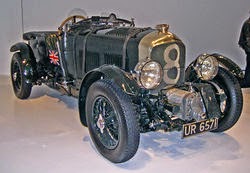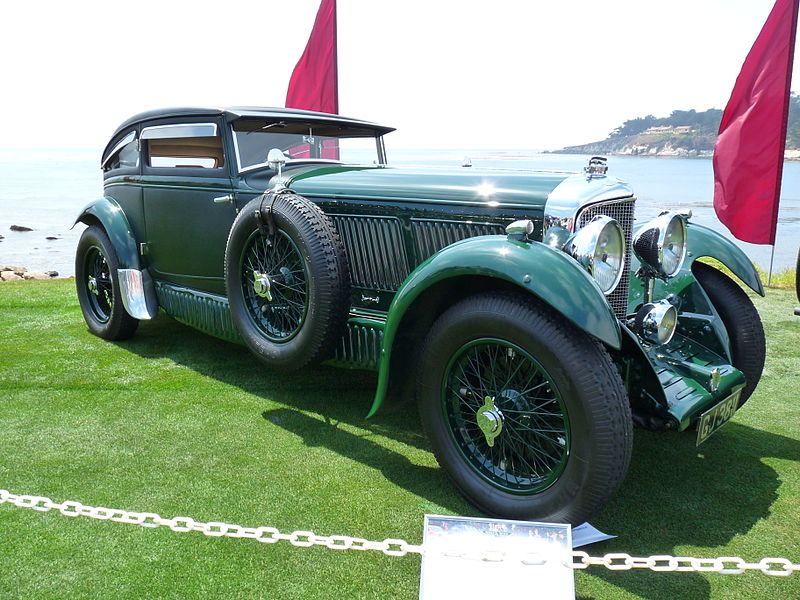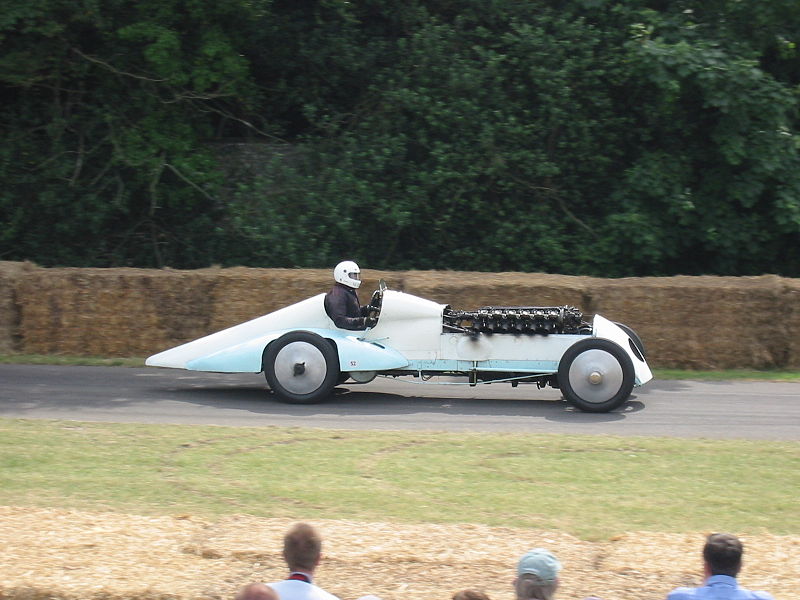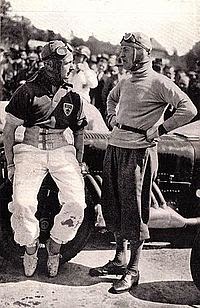 One of the joys of living in this corner of West Berkshire is that frequently ones sees a vintage car pass on one of the local roads. The driver is open to the air as the car glides without effort towards its destination. Most people pause for a moment to witness the beauty of the machine. It is inbuilt in us, we all like witnessing the machines of yesteryear in fine working order, whether it be a steam train crossing the bridge at Hungerford or a vintage car on the road.
One of the joys of living in this corner of West Berkshire is that frequently ones sees a vintage car pass on one of the local roads. The driver is open to the air as the car glides without effort towards its destination. Most people pause for a moment to witness the beauty of the machine. It is inbuilt in us, we all like witnessing the machines of yesteryear in fine working order, whether it be a steam train crossing the bridge at Hungerford or a vintage car on the road.
In these days of high performance cars, I believe that for some of us the actual thrill of driving along the open road has been diluted and given the chance, we would all like to drive a vintage car. Imagine the thrill of driving through the Savernake Forest with its peculiar geography and arriving in Marlborough for tea and buttered scones, whilst looking out of the window at your machine parked proudly in the island on the main street.
Unfortunately, many of us do not have pockets deep enough to be able to experience this first hand, but we can buy framed prints and old photographs of these machines to place on our walls. In most antique shops and arcades, one will find these pictures, which are well worth collecting. They are usually representations of a racing car at speed with the driver in a white helmet. The background is blurred and sometimes you are informed of who the driver was and maybe the event represented.
In these days of hi-tech formula one racing one feels an immediate nostalgia for these brave pioneers, many of who died young in their early machines. But what of these men who risked life and limb in the first three decades of the twentieth century?
Tim Birkin with
Malcolm Campbell
My father mentioned The Bentley Boys when he took me to a race meeting when I was quite young and I remembered these men without really knowing too much about them. That was until about twenty years ago when I came across a framed photograph of a certain Tim Birkin (1896-1933) who was one of these famous Bentley Boys. It was then I decided to research the history of these drivers.
In the 1920s, it was quite expensive to run a car (nothing has changed you may say) and to race one was even more demanding on ones finances. The Bentley Boys were a bunch of enthusiasts who were not by any means on the breadline. They were to some extent the bright young things of the era. Anybody who has read Evelyn Waugh will recognise the type of person. This is not to say they were dilettantes, they were deadly serious about their pursuits.
They were called The Bentley Boys because obviously they drove the famous Bentley car. As we all know, the Bentley was a car with a reputation for high performance and reliability. You paid for what you drove and this was what the marque represented. In 1925 the Bentley brand ran into problems and probably the most famous of The Bentley Boys, Woolf Barnato (1895-1948) purchased the company and in time developed the memorable Bentley Blower car.
The company which was based in Cricklewood and with its dedication and innovation, led to four consecutive wins at the 24 Hour Le Mans race between 1927 and 1930. The main competitor, the Italian Bugatti, which was much more lightweight and fragile, was no match for the more rugged Bentley’s which, as my researches indicate, were sometimes called “ The worlds fastest lorries”.

Barnato’s Gurney Nutting Sportsman Coupé, often believed to be the car that raced the Blue Train despite being delivered to Barnato weeks after the race
Craig Howell from San Carlos, CA, USA, CC BY 2.0 <https://creativecommons.org/licenses/by/2.0>, via Wikimedia Commons
In the early 1930s there were the Blue Train Races between cars and the Le Train Bleu which took place between Calais and the French Riviera some 750 miles apart. Woolf in March 1930 actually raced the Blue Train from Cannes to Calais and won and in time the Blue Train Bentleys were developed and sold. But as with F Scott Fitzgerald’s novels set in the South of France and Waugh’s main characters the good times were not going to last forever. The depression that hit the world in the 1930s soon hit the demand for the Bentley cars which were never that cheap in first place and in time, the company was sold to Rolls Royce.
There were a number of Bentley Boys apart from Woolf, one of these was Clive Dunfree (1904-1932) who was sadly killed in a spectacular crash at Brooklands which I believe was recorded on the newsreel of the time. He was married to the actress Jane Baxter (1909-1996) who was of the leading lights of the British cinema in the 1930s. It was all very glamorous in what was a dour decade.
Another was Tim Birkin who raced at Brooklands a few times as well as Le Mans which he won in 1931 in a Alfa Romeo (He actually received a telegram of congratulation from Mussolini at the time). Tim actually raced John Cobb (1899-1952) at Brooklands as the result of a wager. This is commemorated in a painting by the artist Terence Cuneo.
I did not purchase the photograph of Tim Birkin but wish I had as I knew my father would have been very interested at the time. The well known Glen Kidston (1899-1931) was another member of The Bentley Boys who was known for his racing and other exploits. If you want to see a more comprehensive list of The Bentley Boys then the internet has plenty of information and has helped me in my researches.
One of the many family holidays I took as a child was to Pendine Sands in Wales. As many of us know, this is a vast stretch of beach (some seven miles long). I can remember walking with my father on the beach one day and he told me that a racing car was buried under the sands after a fatal accident many years ago. He really did not elaborate, but the subject fascinated me especially after reading an article in a motoring magazine some years later. I was aware that the sands had been used as the venue for car and motorcycle races since the beginning of the 20th century but what I did not realise was that it was also the venue for attempts at the world land speed record and this lead to the burial of the machine.

Babs
edvvc from London, UK, CC BY 2.0 <https://creativecommons.org/licenses/by/2.0>, via Wikimedia Commons
The driver in question was John Godfrey Parry-Thomas (1884-1927) as with The Bentley Boys, he had connections with Brooklands but here the similarities ended. Unlike the Bentley clan, he lived a very quiet life but still won over thirty races in five or so seasons. But Parry-Thomas was looking beyond that at the world land speed record. He developed a car named Babs which he took to Pendine Sands and on the 28th April 1926 achieved over 170 mph a speed record which stood for nearly a year.
His great rival was Malcolm Campbell (1885-1948). Soon Campbell reached 174 mph in his famous Bluebird. This lead to an attempt on the 3rd March 1927 by Parry – Thomas. Sadly due to a mechanical fault Babs crashed and killed Parry-Thomas. This was the final attempt at speed records on Pendine Sands. Babs was buried in the dunes near the village of Pendine and remained there until 1969 (some two or three years after our previous visit) when Owen Wyn Owen a restorer and mechanic recovered the wreck.
As you would think, Babs was in a terrible state after being buried for some forty two years. But with a great deal of effort and dedication Babs was rebuilt and was actually driven again. Babs can be seen at the Pendine Museum of Speed and at times at the Brooklands museum. I have not yet seen her but look forward to meeting her when I am next in the area.

Blue Bird, Pendine, January 1927
Andy Dingley (scanner), Public domain, via Wikimedia Commons
I have already noted that you can quite easily find racing memorabilia in antique shops and the Arcade. Apart from framed prints and photographs, these men also I believe, appeared on cigarette cards and maybe postcards. I do not really collect these as I have more of a nostalgic interest than an actual interest in motor racing. As with a number of people, I like to see the ships, trains, aeroplanes and cars of previous years. I also like the supposed romance of the era and when thinking about these things, it brings back memories of those times spent at Pendine Sands with my father and the long forgotten race meetings we occasionally attended.


